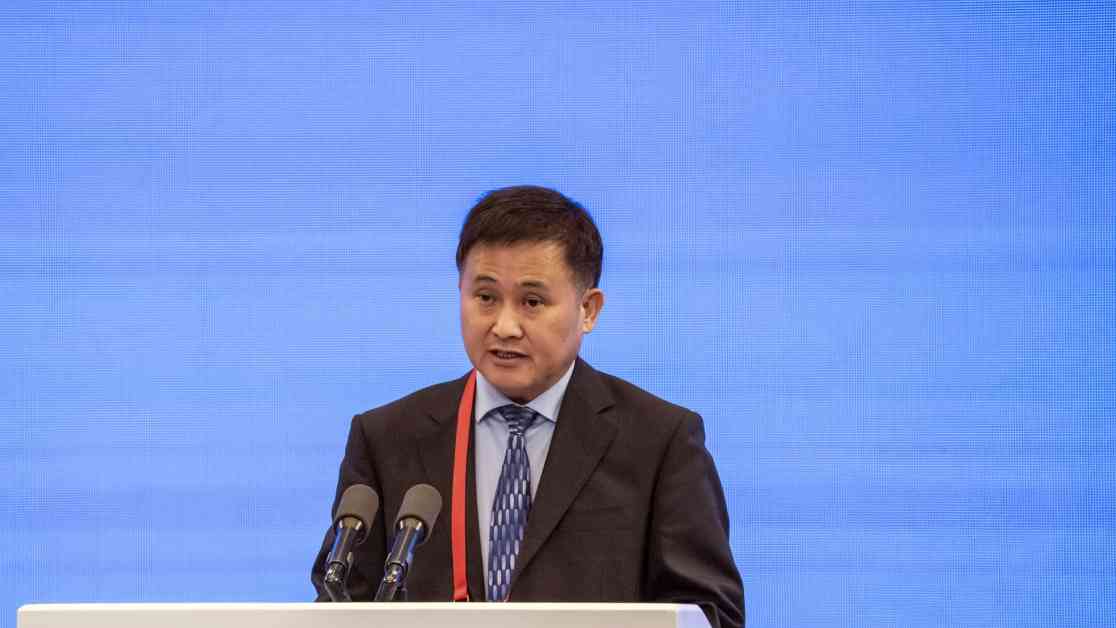China’s financial risks have dropped, including from local government debt, according to People’s Bank of China Governor Pan Gongsheng. Speaking at the Lujiazui Forum in Shanghai, Pan stated that the central bank will collaborate with the Ministry of Finance to help China achieve its full-year growth targets. He emphasized that monetary policy would remain supportive to continue stabilizing the economy.
Decrease in Local Government Debt Risks
Pan Gongsheng highlighted the progress made in reducing local government debt risks, stating that China’s overall financial system is sound. He mentioned that the number and debt levels of local government financing platforms are declining, leading to a significant drop in the cost of their debt burden. This positive development reflects coordinated efforts by local governments, financial institutions, and investors to address the challenges posed by high debt levels in the real estate sector.
Local government financing vehicles (LGFVs) have played a crucial role in enabling local authorities to fund infrastructure and other projects. However, the lack of regulatory oversight and indiscriminate funding practices have raised concerns about the debt burden on LGFVs, for which local governments are ultimately responsible. Despite progress in alleviating repayment needs for the weakest LGFVs, S&P Global Ratings analysts caution that LGFV debt remains a significant issue, with a substantial amount of bonds due to mature in the coming quarters.
While efforts to mitigate local government debt risks have shown some success, the ongoing growth slowdown in China poses challenges. With the economy expanding by 5% in the first half of the year, analysts are concerned about the country’s ability to reach its annual growth target of around 5% without additional stimulus measures. The International Monetary Fund has recommended that macroeconomic policies focus on supporting domestic demand to mitigate debt risks and sustain economic stability.
Challenges in the Banking Sector
The IMF’s review of China’s financial situation has identified small and medium-sized commercial and rural banks as a weak link in the banking system. With nearly 4,000 such banks accounting for a significant portion of total banking system assets, addressing vulnerabilities in these institutions is crucial for ensuring financial stability. Efforts to strengthen oversight and improve risk management practices in the banking sector are essential to safeguard against potential systemic risks.
Pan Gongsheng acknowledged the progress in reducing the number of high-risk small and medium-sized banks, emphasizing the importance of enhancing resilience in the banking system. While specific figures were not provided, the central bank’s efforts to address vulnerabilities in the banking sector are aimed at promoting a more robust and sustainable financial system. By strengthening regulatory frameworks and enhancing risk assessment mechanisms, China aims to mitigate potential threats to financial stability and support ongoing economic development.
Shift in Real Estate Policies
In recent years, China has sought to reduce its reliance on the real estate sector for economic growth and promote diversification into advanced technology and manufacturing industries. Pan Gongsheng highlighted the government’s efforts to address challenges in the real estate market, including implementing policies to support affordable housing and rental units. By reducing mortgage down payment ratios and maintaining low-interest rates, authorities aim to facilitate access to housing for the population while promoting sustainable growth in the property sector.
The shift towards affordable housing and rental units reflects a broader strategy to rebalance the economy and reduce risks associated with excessive reliance on real estate development. By promoting a more diversified economic structure, China aims to enhance long-term sustainability and resilience in the face of evolving global economic trends. Pan’s emphasis on supporting local governments with financing for property acquisitions underscores the government’s commitment to fostering a more inclusive and sustainable housing market.
Monetary Policy Adjustments
The People’s Bank of China’s recent decision to delay a rollover of its medium-term lending facility in favor of a capital injection via a 7-day reverse repurchase agreement has raised questions about the central bank’s monetary policy strategy. Pan Gongsheng highlighted the importance of revamping the monetary policy structure to address evolving economic challenges and promote stability in the financial system. The central bank’s upcoming release of the monthly loan prime rate will provide further insights into its approach to managing interest rates and liquidity in the banking sector.
The adjustment in benchmark rates and liquidity management tools reflects the central bank’s proactive stance in responding to changing economic conditions and promoting sustainable growth. By adopting a flexible and data-driven approach to monetary policy, China aims to balance the need for stimulus measures with the imperative of maintaining financial stability. Pan’s remarks on the central bank’s efforts to enhance policy effectiveness and transparency underscore the ongoing commitment to sound financial governance and risk management.
Conclusion
In conclusion, China’s progress in reducing local government debt risks and addressing challenges in the banking sector reflects a broader commitment to promoting financial stability and sustainable economic growth. By implementing targeted policy measures and strengthening regulatory frameworks, China aims to mitigate risks associated with high debt levels and promote resilience in the financial system. The shift towards affordable housing and rental units in the real estate sector underscores the government’s efforts to rebalance the economy and reduce reliance on property development as a driver of growth. As China navigates evolving economic dynamics and global uncertainties, continued vigilance and proactive policy responses will be essential to safeguard financial stability and support long-term prosperity.














